Leaf from a Book of Hours, with a miniature by the 'Spanish Forger', in Latin, illuminated manuscript on parchment [northern France (probably Paris), c. 1460 and late nineteenth or early twentieth century] Single leaf, from a Book of Hours with single column of 17 lines of a late gothic hand, capitals touched in yellow wash, or with hairline penwork decoration, red rubric, single 4-line blue initial with coloured foliage on gold grounds, full decorated border of foliage, the space for the arch-topped miniature originally left blank and then filled in in either the late nineteenth or early twentieth century with a scene of the Decollation of St. John the Baptist, before a group of soldiers and a city, areas of discolouration and thumbing to borders, else good condition, 165 by 122mm. Provenance: 1. From a Book of Hours written and partly illuminated, probably in Paris c. 1460, but left incomplete with spaces left for its miniatures. 2. In the seventeenth century it was owned by a French clergyman, but then apparently returned to the Parisian market in the late nineteenth or early twentieth century, when it came into the hands of the so-called 'Spanish Forger' (see below). 3. The whole volume in Karl & Faber auctions, Munich, in 1949, and perhaps to a local buyer, then re-emerging in Hartung and Hartung, Munich, 10 May 2005, lot 111, and then with single leaves with miniatures removed, or entirely dispersed. 4. Acquired from private European collector in 2014. The forger-artist: The Spanish Forger was one of the most prolific and successful forgers, with hundreds of works now identified from only a few decades of work. He was most probably active in the 1890s, and appears to have been painting up to the 1920s, borrowing from chromolithographic editions published in Paris, especially the series of publications by Lacroix, which along with Parisian newspaper cuttings found used as packing within frames, suggests that he was based in that city. Suspicion seems to be falling on an employee of the Parisian publishing house, Firmin Didot The name 'Spanish Forger' came from the false attribution of a painting once thought to be by a fifteenth-century Spanish artist, but the name has now stuck. He was unmasked in 1930 by Belle da Costa Green, then director of the Pierpont Morgan Library, New York, and was the subject of an exhibition of his art in 1978 in the same institution, which was then revisited in an exhibition in 2014 at the Binghamton University Art Museum. Despite the revelations of the modern origin of his work, it remains steadfastly popular, and in 2009 the Victoria and Albert Museum in London acquired five paintings by the Spanish Forger 'for what they tell us about late nineteenth-century perceptions of the Middle Ages'. His style, while emulating medieval art, can be identified by his oval faced figures, their pointed toes, peculiarities of architecture and armour, and his reuse of medieval manuscripts, often cleaning off one side as in the case of many miniatures painted on cuttings from choirbooks, or as here in spaces left empty by the original book producers. The present leaf has been registered as L 268 with the Pierpont Morgan Museum.
Leaf from a Book of Hours, with a miniature by the 'Spanish Forger', in Latin, illuminated manuscript on parchment [northern France (probably Paris), c. 1460 and late nineteenth or early twentieth century] Single leaf, from a Book of Hours with single column of 17 lines of a late gothic hand, capitals touched in yellow wash, or with hairline penwork decoration, red rubric, single 4-line blue initial with coloured foliage on gold grounds, full decorated border of foliage, the space for the arch-topped miniature originally left blank and then filled in in either the late nineteenth or early twentieth century with a scene of the Decollation of St. John the Baptist, before a group of soldiers and a city, areas of discolouration and thumbing to borders, else good condition, 165 by 122mm. Provenance: 1. From a Book of Hours written and partly illuminated, probably in Paris c. 1460, but left incomplete with spaces left for its miniatures. 2. In the seventeenth century it was owned by a French clergyman, but then apparently returned to the Parisian market in the late nineteenth or early twentieth century, when it came into the hands of the so-called 'Spanish Forger' (see below). 3. The whole volume in Karl & Faber auctions, Munich, in 1949, and perhaps to a local buyer, then re-emerging in Hartung and Hartung, Munich, 10 May 2005, lot 111, and then with single leaves with miniatures removed, or entirely dispersed. 4. Acquired from private European collector in 2014. The forger-artist: The Spanish Forger was one of the most prolific and successful forgers, with hundreds of works now identified from only a few decades of work. He was most probably active in the 1890s, and appears to have been painting up to the 1920s, borrowing from chromolithographic editions published in Paris, especially the series of publications by Lacroix, which along with Parisian newspaper cuttings found used as packing within frames, suggests that he was based in that city. Suspicion seems to be falling on an employee of the Parisian publishing house, Firmin Didot The name 'Spanish Forger' came from the false attribution of a painting once thought to be by a fifteenth-century Spanish artist, but the name has now stuck. He was unmasked in 1930 by Belle da Costa Green, then director of the Pierpont Morgan Library, New York, and was the subject of an exhibition of his art in 1978 in the same institution, which was then revisited in an exhibition in 2014 at the Binghamton University Art Museum. Despite the revelations of the modern origin of his work, it remains steadfastly popular, and in 2009 the Victoria and Albert Museum in London acquired five paintings by the Spanish Forger 'for what they tell us about late nineteenth-century perceptions of the Middle Ages'. His style, while emulating medieval art, can be identified by his oval faced figures, their pointed toes, peculiarities of architecture and armour, and his reuse of medieval manuscripts, often cleaning off one side as in the case of many miniatures painted on cuttings from choirbooks, or as here in spaces left empty by the original book producers. The present leaf has been registered as L 268 with the Pierpont Morgan Museum.
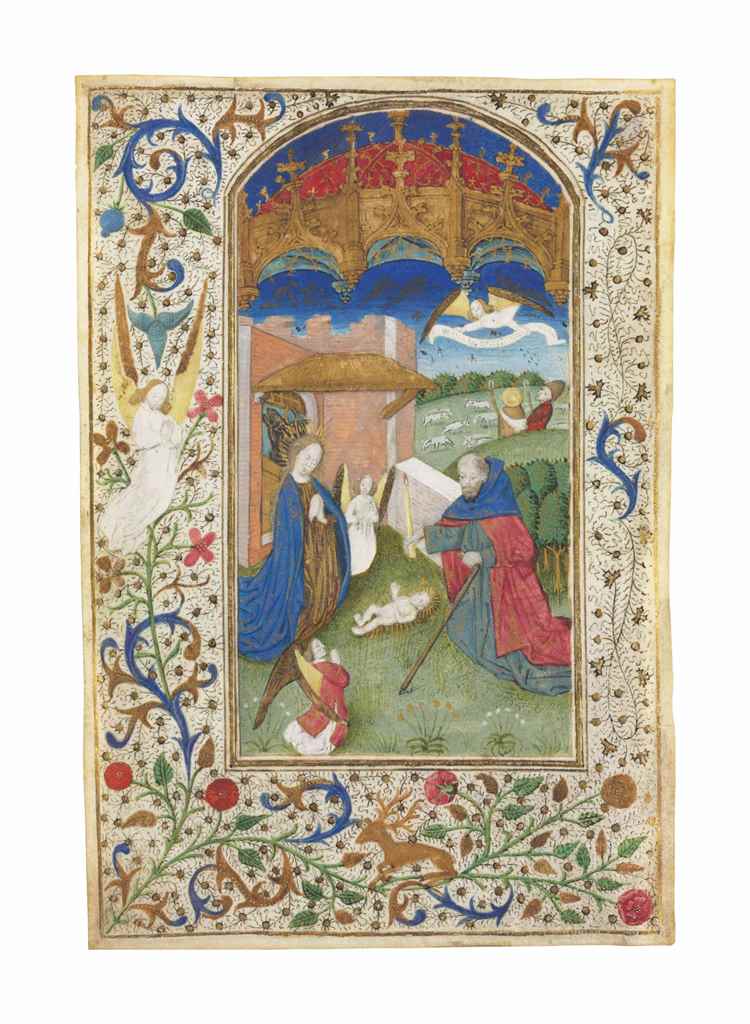
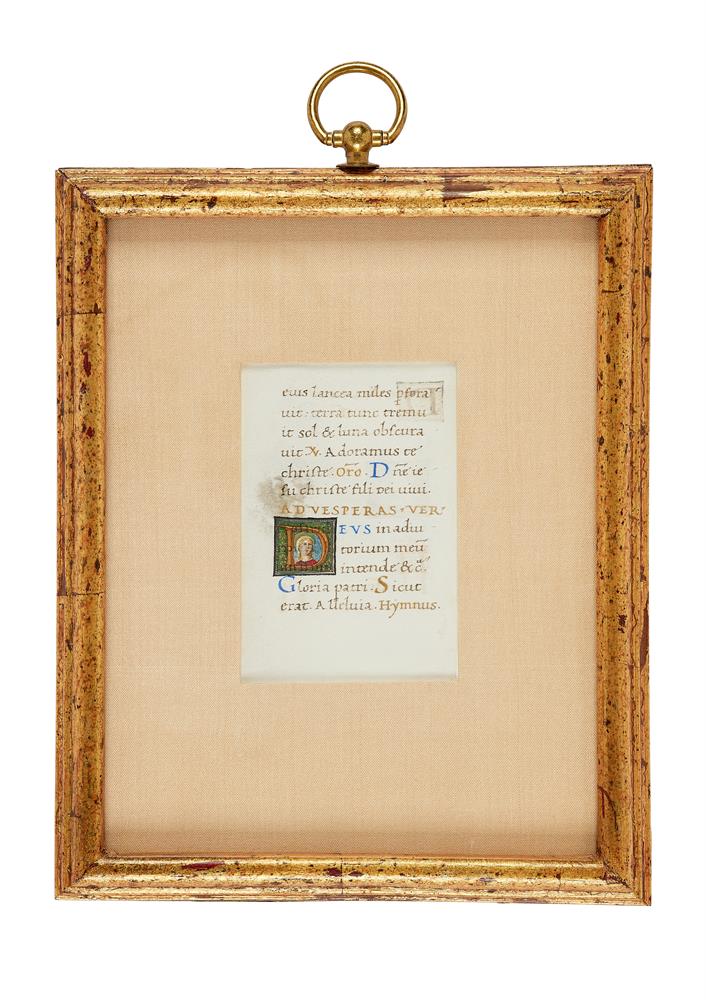

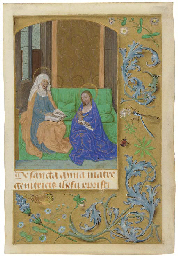


.jpg?w=400?width=1600&quality=70)
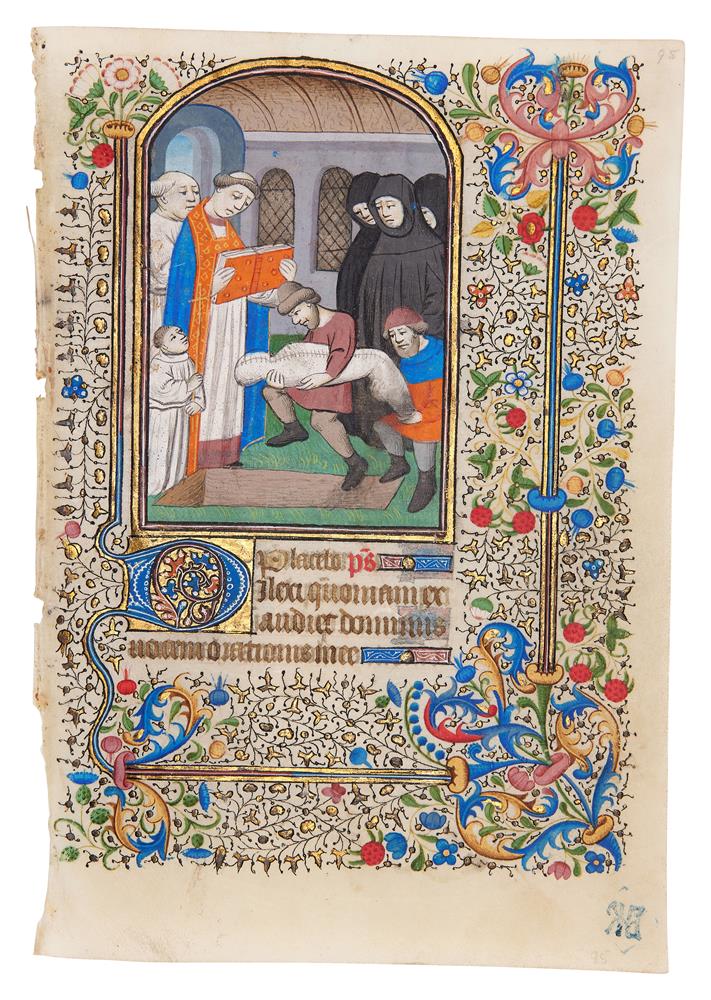
.jpg)
.jpg)
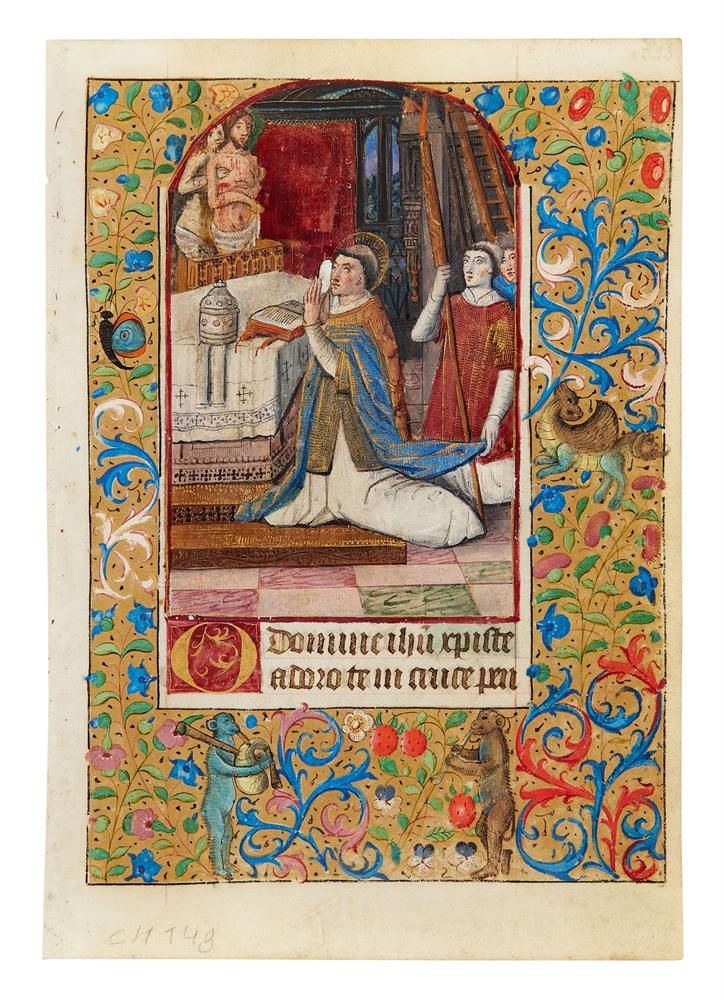

.jpg)
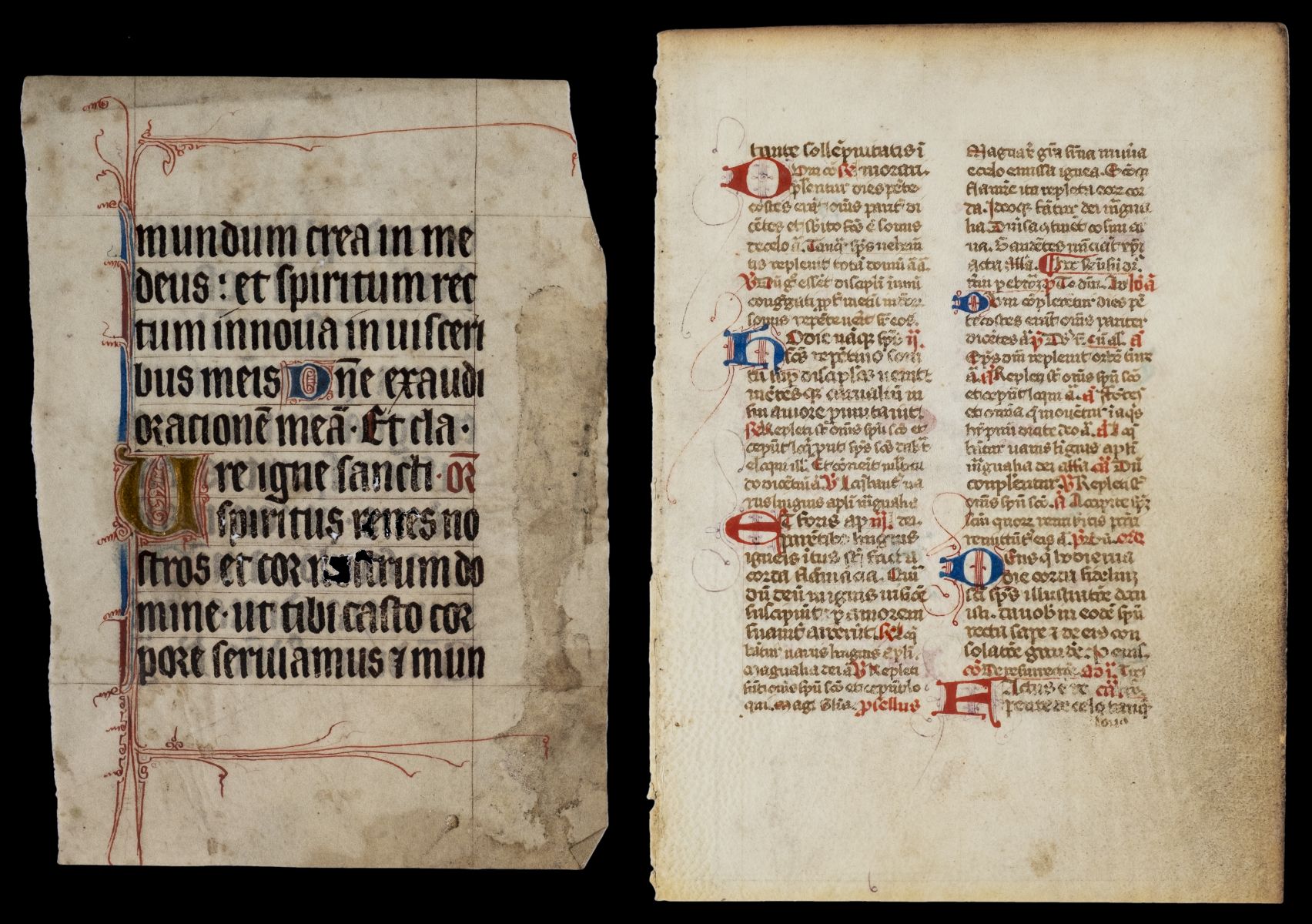

Testen Sie LotSearch und seine Premium-Features 7 Tage - ohne Kosten!
Lassen Sie sich automatisch über neue Objekte in kommenden Auktionen benachrichtigen.
Suchauftrag anlegen